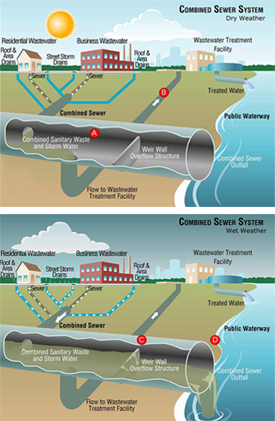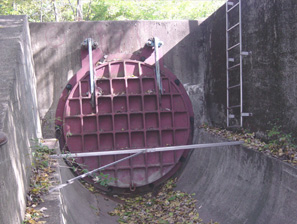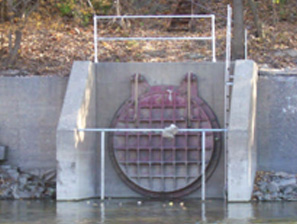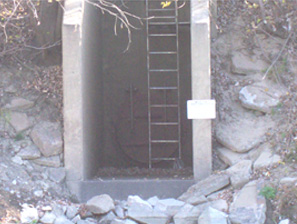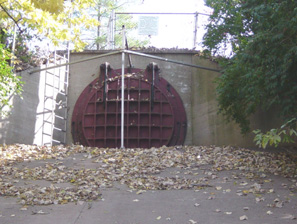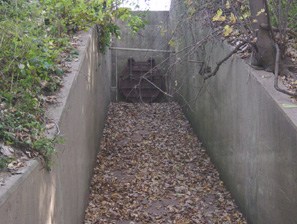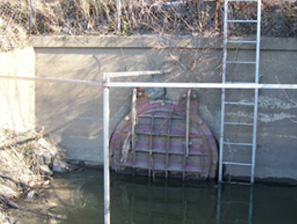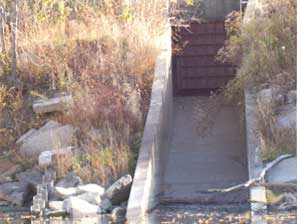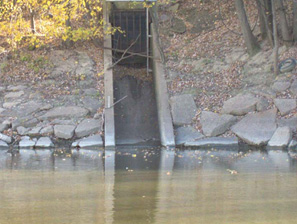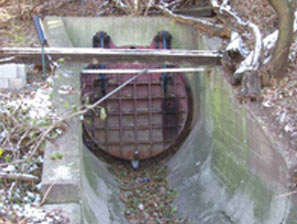The City of Terre Haute’s combined sewer area in which oversized sewers convey both sanitary and stormwater (via inlet connections) is centrally located in the older, central and northern sections of the City. Many of the combined sewer trunk lines (of brick construction), which discharged directly into the Wabash River prior to the construction of the main interceptor, were installed in the late 1800’s and early 1900’s.
The Terre Haute Sanitary District, governed by a 5 member board appointed by the Mayor, includes significant rural and urban areas outside of the City so the City’s wastewater treatment plant (WWTP) not only treats wastewater for Terre Haute but also for the Town of Seelyville and significant nearby unincorporated developed and undeveloped areas.
Combined Sewer System Operations
To understand combined sewer overflows it is important to understand what a combined sewer system is. Over 100 years ago cities recognized the need to construct sewers to carry sewage away from homes and businesses to protect public health. Originally sewers were designed to carry both sewage and stormwater directly to streams and rivers. The natural biological processes in streams and rivers broke down the organic waste from the sewage. This system was adequate until the growing population created too much waste for the river to clean up naturally. Today scientists understand that the bacteria and viruses contained within combined sewage can create a potential health hazard when discharged to our waterways.
Currently the combined sewer system carries sewage from our homes and businesses to the City’s wastewater treatment plant instead of the river. However, when it rains or there is a large amount of snowmelt, excess water that enters the combined sewer system through catch basins and other drainage structures can exceed the capacity of the combined sewer system and the wastewater treatment plant. When this occurs the excess water is discharged to the Wabash River through CSO outfall structures. Normally, these outfall structures block flow and force sewage into the main interceptor to the wastewater plant. However, when the flows are high enough they overtop a weir or plate and are discharged.
Combined Sewer Service Area Basins
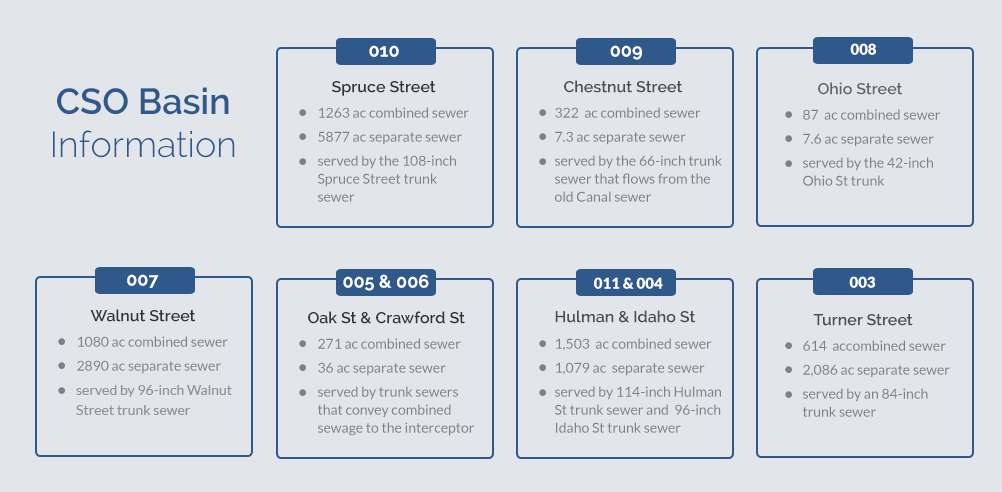
Trunk Sewer and Interceptor Network
The City of Terre Haute has nine major trunk sewers, ranging in size from 42-inches to 132-inches, that flow to the west towards the Wabash River. A concrete main interceptor sewer runs along the east bank of the Wabash River to intercept wastewater flows from these trunk sewers that originally flowed directly into the river. The interceptor sewer conveys this flow to the 48 MGD Main Lift Station where it is then pumped to the Wastewater Treatment Plant.
The interceptor is constructed in a 100 foot easement and contains sections with little or no cover. It starts at the north end of the combined sewer area at Spruce Street.
Wastewater from each of Terre Haute’s combined sewer service areas discharge to a diversion structure. During dry weather, all of the flow is diverted through the throttle pipes into the main interceptor sewer for conveyance to the wastewater treatment facility. During large storms, excessive flows enter the diversion structure, overtop the elevation of a weir and overflow into the Wabash River through the outfall pipe.
CSO Outfall and Diversion Structures
The CSS has nine diversion structures, which vary in design, and ten outfalls. The diversion structures at Hulman and Idaho Streets are located at the interceptor whereas the other seven diversion structures divert dry weather flow through a throttle pipe to the interceptor. A flap gate is located on each outfall pipe, except the outfall at the main lift station and the WWTP, to prevent river water from entering the system. The outfalls are located between Spruce Street and Interstate 70 along the Wabash River, four of which are located at or near Fairbanks Park.
Currently, City personnel inspect the outfalls during and after every rain event in accordance with their CSO Operational Plan. Terre Haute’s Combined Sewer Operational Plan (2006) can be found in the Library Section.
CSO Outfalls Locations
010 - Spruce St
009 - Chestnut St
008 - Ohio St
007 - Walnut St
006 - Oak St
005 - Crawford St
004 - Hulman St
011 - Idaho St
003 - Turner St
002 - Main Lift Station
No results found
Select an outfall from the list on the left to see its location and view an image of the structure.


